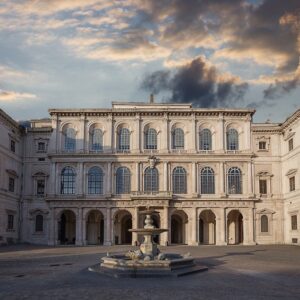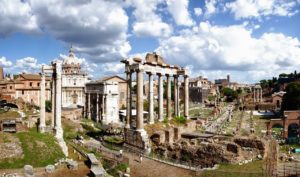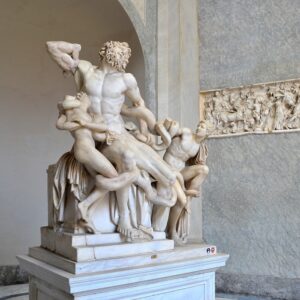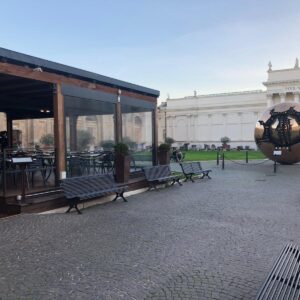The city of Venice harbors magnificent palaces with noble origins and a centuries-old history among its winding streets. It is not uncommon for many of these buildings today to have been converted into museums or venues hosting exhibitions, foundations, and displays. Visiting the lagoon city means constantly immersing oneself in the unparalleled culture of one of the world’s capitals of art and architecture.
Such is the case with Palazzo Grassi, whose imposing neoclassical facade in white stone directly overlooks the Grand Canal. It was built between 1748 and 1772, just before the collapse of the Serenissima, by the architect Giorgio Massari on behalf of the noble Grassi family, among the most influential in Venice at the time.
Palazzo Grassi: A Historic Landmark on the Grand Canal
From its construction to the early 1900s
The palace remained in the ownership of the Grassi family until 1840. After a few years of continuous changes in ownership, in 1857, the palace was sold to Baron Simone de Sina, who carried out some restoration and aesthetic and structural modifications. It was only in the 20th century, with the Marinotti family, that some works of art began to be exhibited in the palace, becoming the venue for exhibitions, receptions, and fashion shows. Starting from 1959, Palazzo Grassi exclusively hosted exhibitions, both collective and solo, capturing the interest of the art world of those years.
From 1983 to the present
In 1983, the building passed into the hands of Fiat, which had the property renovated by Gae Aulenti, giving the palace a more contemporary stylistic imprint with significant structural interventions. The nobility of the aesthetic emphasizes the historical importance of the most significant pieces in the collection, which find a home within the dialogue between neoclassical architecture and the more modern solutions of the restoration designed by architect Tadao Ando. Today, we discover everything there is to know about the palace.
With the new millennium, in 2005, the palace was finally purchased by François Pinault, who turned to the Japanese architect Tadao Ando to make further modifications aimed at hosting contemporary artists’ works in a neoclassical context.
The Pinault Collection: A Journey Through Contemporary Art at Palazzo Grassi
The uniqueness of François Pinault and his Palazzo Grassi Museum lies in developing an intimate and privileged relationship with artists, leading to the creation of works conceived specifically for his spaces. Today, the museum, with its temporary exhibitions, boasts about 10,000 contemporary art pieces collected since the 1960s, largely reflecting this ongoing dialogue between Pinault and the artists. These numbers place it among the top five exhibition centers with the largest collection of contemporary art in the world.
A Visit to the Museum
Art and architecture enthusiasts should not miss a visit to Palazzo Grassi, perhaps after a morning exploring the Grand Canal, the Giudecca Canal, and the Church of San Marco.
Useful Info
Address: Campo San Samuele 3231
Open every day from 10 am to 7 pm – closed on Tuesdays
COST:
Full price
€15 Palazzo Grassi
€20 Punta della Dogana + Palazzo Grassi
Reduced
€10 Palazzo Grassi
€15 Punta della Dogana + Palazzo Grassi















